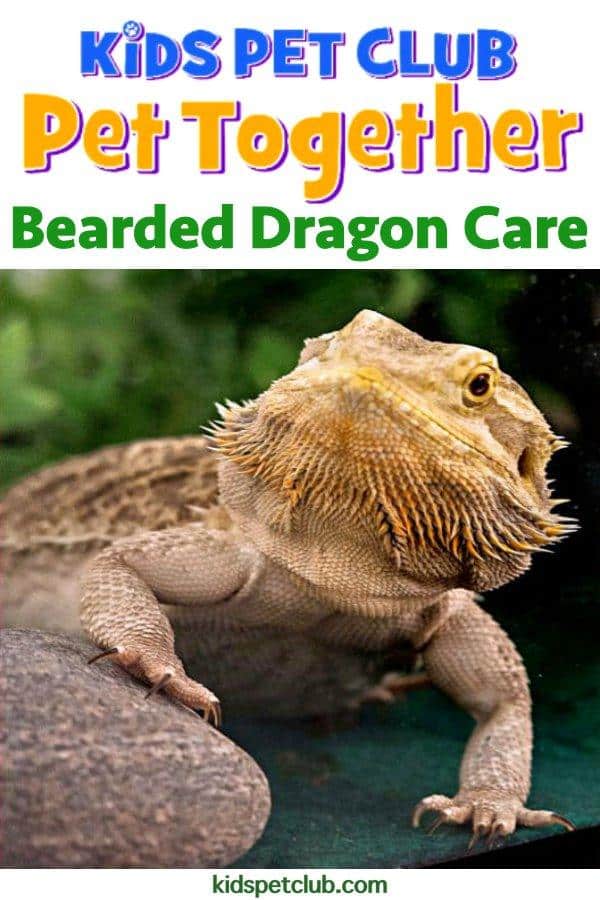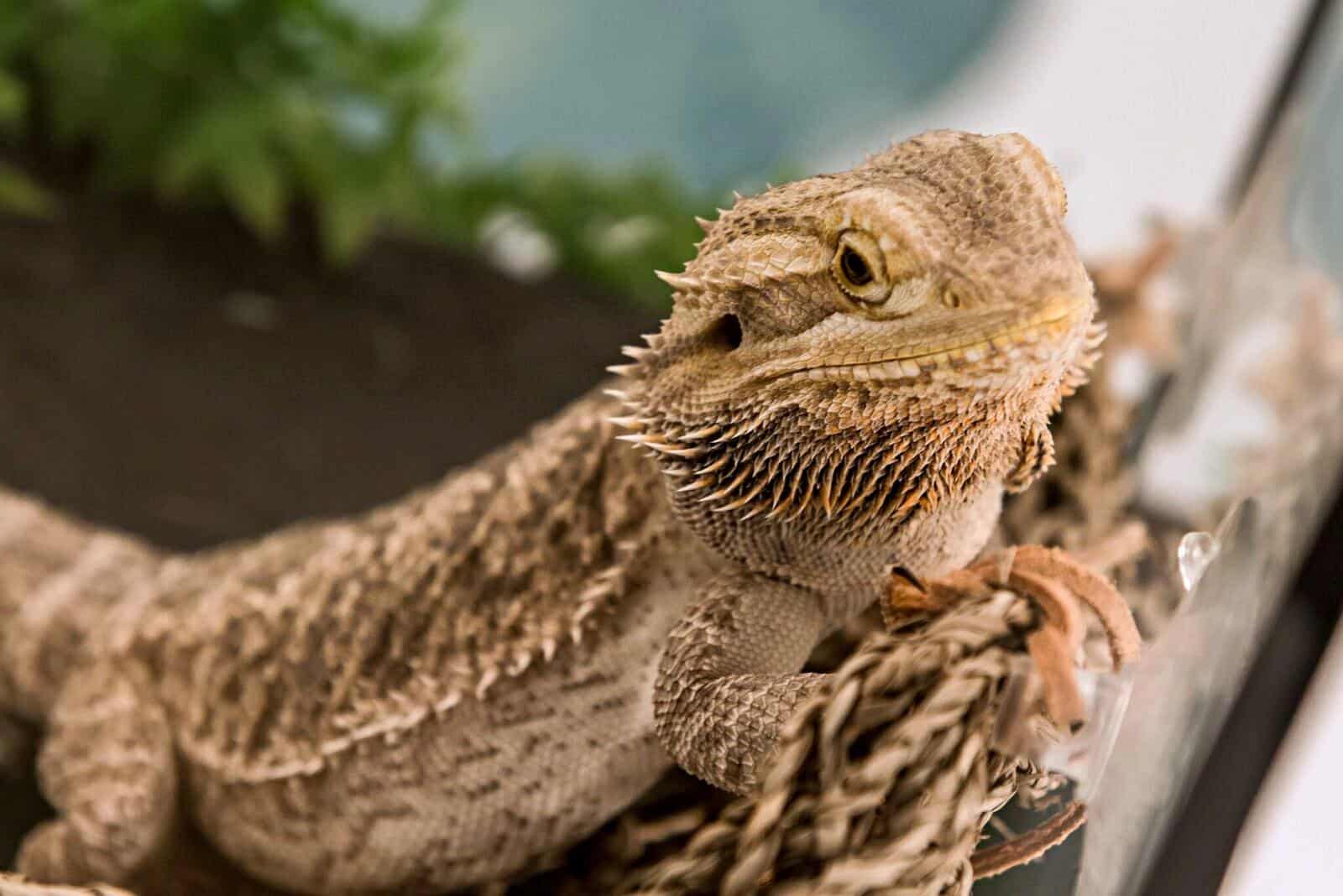
Bearded dragons – also known as “beardies” are popular due to their docile and friendly nature. These good-looking, moderately sized lizards make the perfect pet for reptile lovers.
Native to Australia, beardies come from an arid and rocky environment. They are normally tan or brown in color but their morphs range from a variety of hues in orange, red, pink and yellow.
Fun Fact: Bearded dragons have an average life span of 6 to 10 years, but there have been documented cases of ones living up to 20 years!
Bearded dragons are relatively low maintenance. However, their nutrition and habitat requirements can be fairly complex. You need special equipment and the right set up to care for bearded dragons properly with plenty of space.
Behavior
Bearded Dragons get their name from the spiny projections that line their throats and resemble a man’s beard. When they feel threatened, they puff out their beards and open their mouths to make appear larger — making it easy to know when they’re upset.
However, beardies in captivity are usually quite docile and easy to tame. They show a range of intriguing behaviors that make them fun to watch. By understanding their body language you’ll be able to tell what your lizard wants or how it is feeling. You may find your dragon gaping his mouth to regulate its body temperature and sometimes it may wave its front limb to show submission.
Housing & Habitat
The enclosure or tank for your bearded dragon needs to accommodate their physical needs and emulate their natural habitat. A 75-gallon tank with a secure screen cover is suitable for a single adult bearded dragon.
Beardies love to climb as they are semi-arboreal and like to perch themselves on an elevated area. Add some sturdy branches, logs or rocks to their enclosures – ideally in their basking area. A heat lamp should be placed on one side of the tank to create the basking area and keep the other side as a cooler option for when they need it.
Your beardie will also need a hide or two which they can escape into, as well as foliage for general shelter. It is recommended to keep a hide at each end of the temperature gradient within the tank.
The tank also needs a substrate. Play sand is often used for adult beardies as they love to dig and burrow. Paper or indoor/outdoor carpet also works, however, you must avid wood shavings, corn cob, walnut shells, or other substrates that could cause problems if ingested. For juvenile bearded dragons, you must avoid using sand or any loose substrate as they could accidentally eat it, leading to intestinal impaction. Instead, use paper towels, papers, or indoor/outdoor carpeting until they become full-grown adults.
The tank should be cleaned once a month with reptile-safe disinfectant and their shedding and excrement should be thrown out frequently with spot-cleaning.
Here are 10 items you will need to care for your bearded dragon:
- A good quality tank big enough to comfortably house your dragon.
- Rocks, branches, and foliage.
- A substrate (sand)
- Food & Water Dishes
- Calcium supplement.
- UV light (must be replaced every 6-12 months, or as stated by manufacturer)
- Heat lamp – to warm the basking area
- A spraying bottle
- Reptile-safe disinfectant
- Poop scoop and bags for disposal

Diet
Bearded dragons are omnivores, so their diet consists of both animal and plant material. It is important that you feed them a balanced combination of insects and vegetables.
When feeding your beardie, make sure to break up the food into bite-sized portions that are easy for your lizard to digest.
Quick Tip: An easy way to decide the correct size of the food is to make it equal to the size of the space between your bearded dragon’s eyes.
Bearded dragons, especially young ones are prone to digestive impaction which can be caused by the tough exoskeletons of crunchy bugs like mealworms. Therefore, you must feed these in limited quantities.
Adult beardies can eat a wider range of insects such as waxworms, superworms, silkworms, butter worms, red worms, earthworms. They can occasionally be treated to Pinkie mice as well.
Insects should be gut-loaded and dusted with calcium and vitamin/mineral supplements before feeding to prevent metabolic bone disease in beardies.
Bearded dragons should also be fed finely chopped leafy greens, fruits like banana and kiwi and vegetables like carrots, zucchini, etc.
Water should be provided in a shallow dish. Lightly mist the surrounding foliage as this is how he would naturally get water in the wild, but do not make the environment wet or humid. Don’t forget – bearded dragons are from an arid environment! If your bearded dragon enjoys soaking in water, you can offer them a larger dish.
Light & Temperature
It is important to expose your bearded dragon to UVA and UVB radiation. You can do this with special lights & fluorescent bulbs available at pet stores, designed specifically for reptiles. Your beardie should be able to get within a foot of the light in order to benefit from the UV rays.
Mercury vapor bulbs are a good option as they provide both UV radiation and heat. It’s a light basking lamp all in one. It is important to protect your beardie from getting too close to the UV bulbs. This can be done using a screen top (not glass).
Regulated exposure to sunlight is beneficial but never leave your pet outside in a glass tank as it can overheat under direct sunlight.
It is important to give beardies a consistent light and dark cycle (12 to 14 hours of light) which can be set using a timer on the lights.
Keep a well-controlled temperature gradient for your beardie dragon, along with the basking spot. The cooler gradient should range from 80 to 85 °F to a temperature of about 95 to 105 on the basking side. You can moderate the temperatures in the cage with thermometers.
Here’s a quick list of Do’s and Don’ts for caring for your bearded dragon:
DO
- Offer water in a dish that is large enough for them to soak. Be sure to keep this dish and the water in it clean.
- Serve their food in a shallow dish especially if you keep your dragons on sand. Don’t place their food directly on the substrate.
- It is recommended to handle your beardie for at least half an hour every day. They are curious creatures that enjoy human company!
- When picking them up, approach from the front and scoop them from beneath their front legs so as not to alarm them.
- Thoroughly wash your hands with soap before and after handling your pet or its habitat.
DON’T
- Never keep more than one male bearded dragon together in the same tank because they are highly territorial animals.
- Don’t leave your beardie’s habitat in direct sunlight. The indirect sun is better for them.
- Avoid feeding insects caught in the wild, especially fireflies. Many insects found outdoors can be covered in pesticides and other chemicals that will make your dragon sick.
- Never pick up a beardie by the tail or legs, or squeeze them- you will end up hurting them.
- Avoid letting your bearded dragon run free. It can eat something dangerous, get too cold, get hurt, or run away.
Choosing Your Bearded Dragon
As with other pets, please seek a captive-born animal from a rescue or reputable breeder. Don’t forget to do your research and do not encourage the illegal wildlife trade!


